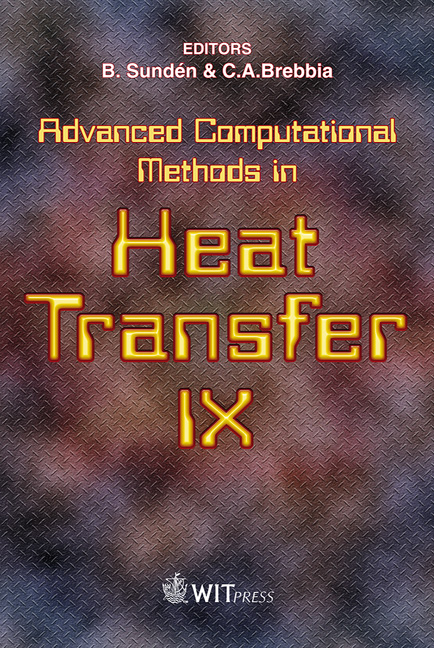Heat Transfer Modelling In Double Pipes For Domestic Hot Water Systems
Price
Free (open access)
Transaction
Volume
53
Pages
10
Published
2006
Size
689 kb
Paper DOI
10.2495/HT060371
Copyright
WIT Press
Author(s)
I. Gabrielaitiene, B. Sunden & J. Wollerstrand
Abstract
The purpose of this work is to numerically investigate the heat transfer in a pipeline layout for domestic hot water systems. This layout, called double pipe, includes two adjacent counter-flow pipes, placed one above another in a common insulation (i.e., there is no insulation layer between the two pipes). However, when using this layout, the prediction of fluid temperatures in the pipes becomes complicated as thermal coupling occurs between the two pipes resulting from the presence of a temperature difference and physical contact of the two (copper) pipes. This coupling phenomenon is difficult to account for using analytical approaches and a numerical method, namely a finite volume method, was therefore applied in this study. It was found that a realizable k-epsilon, two-equation, turbulence model with non-equilibrium wall functions showed the best performance in terms of heat transfer prediction. The validation was carried out against the empirical Nu number correlation developed at uniform heat flux conditions. Since this condition is not relevant for the flows in the double pipe, these were simulated as being placed in separately insulated pipes. The results from modelling the double pipe layout showed that the heat flux increases compared to a single pipe arrangement. Keywords: double pipe, domestic hot water systems, coupled thermal regime, low Re number turbulent regime, two-equation turbulent models. 1 Introduction In domestic water systems, where hot water is distributed around a building from central supply, temperature control becomes an important issue due to restrictions associated with various health risks. The risk is connected with the pathogenic bacterium Legionella, which grows at temperatures below 46°C [1].
Keywords
double pipe, domestic hot water systems, coupled thermal regime, low Re number turbulent regime, two-equation turbulent models.





